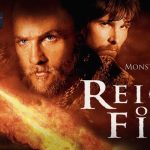The New World (2005)
“The New World,” directed and written by Terrence Malick in 2005, is a visually stunning historical drama that delves into the early days of the Jamestown settlement in Virginia. The film intricately weaves the story of Captain John Smith, Pocahontas, and John Rolfe, exploring themes of love, cultural conflict, and the quest for identity. With Malick’s signature lyrical style and philosophical undertones, “The New World” presents a captivating portrait of a pivotal moment in American history.
The film opens with breathtaking visuals of the lush, untouched landscapes of the New World, capturing the raw beauty of America before European colonization. Malick’s cinematography paints a vivid picture of the natural world, inviting viewers into a realm where humanity is both small and significant against the backdrop of nature’s grandeur. This juxtaposition sets the stage for the story of exploration and discovery that follows.
At the heart of the narrative is the relationship between Pocahontas (Q’orianka Kilcher) and Captain John Smith (Colin Farrell). Their initial meeting is steeped in tension and wonder, as they represent two vastly different worlds. Smith, a soldier and explorer, embodies the European desire for conquest and discovery, while Pocahontas, the daughter of the Powhatan chief, symbolizes the beauty and complexity of Native American culture. Their connection is portrayed with an ethereal quality, marked by innocence and an underlying sense of tragedy, as they navigate the cultural chasm between them.
The film’s pacing is deliberate, allowing moments of introspection and reflection. Malick’s use of voiceover—drawing from the characters’ thoughts and feelings—provides depth to their experiences. This narrative technique allows viewers to engage with the emotional landscapes of the characters, fostering a connection to their inner lives. The contemplative tone enhances the film’s exploration of love, longing, and the clash of civilizations.
As the story unfolds, the settlement of Jamestown faces numerous challenges, including conflict with Indigenous tribes and the harsh realities of survival. The film portrays the settlers’ struggles with a sense of realism that underscores the complexities of colonization. While Smith seeks to understand and forge a bond with the Powhatan people, the film does not shy away from depicting the violence and misunderstandings that arise from cultural differences.

Pocahontas’s journey is central to the narrative. After being torn between her loyalty to her people and her love for Smith, she ultimately encounters John Rolfe (Christian Bale), who represents a different kind of relationship—one based on mutual respect and understanding. Rolfe’s courtship of Pocahontas introduces themes of adaptation and the potential for harmony between cultures. Their relationship highlights the sacrifices made in the name of love and the complexities inherent in crossing cultural boundaries.

The film’s visual storytelling is complemented by a haunting score, composed by James Horner. The music enhances the emotional weight of the narrative, evoking a sense of longing and nostalgia. The score, combined with the stunning cinematography, creates an immersive experience that draws viewers into the emotional core of the film.
Malick’s exploration of nature is also significant in “The New World.” The natural environment serves as both a backdrop and a character in its own right. The film captures the delicate balance between humanity and the natural world, suggesting that the pursuit of progress often comes at a great cost. This theme resonates throughout the film, inviting viewers to reflect on their relationship with nature and the consequences of their actions.

In its final act, “The New World” contemplates the notion of identity and belonging. Pocahontas’s journey leads her to England, where she must navigate the complexities of being a symbol of both Native American culture and colonial ambition. This transition raises poignant questions about cultural heritage and the impact of colonialism on individual identity.

In conclusion, “The New World” is a beautifully crafted film that transcends traditional historical narratives. Terrence Malick’s masterful direction, combined with powerful performances from a talented cast, creates a rich tapestry of love, loss, and discovery. The film’s exploration of cultural conflict and the human experience resonates deeply, making it a thought-provoking addition to the canon of historical cinema. Through its stunning visuals, lyrical storytelling, and profound themes, “The New World” invites viewers to reflect on the complexities of human connection and the enduring impact of history on our identities.
Suggested videos for you:
Suggested videos for you:











